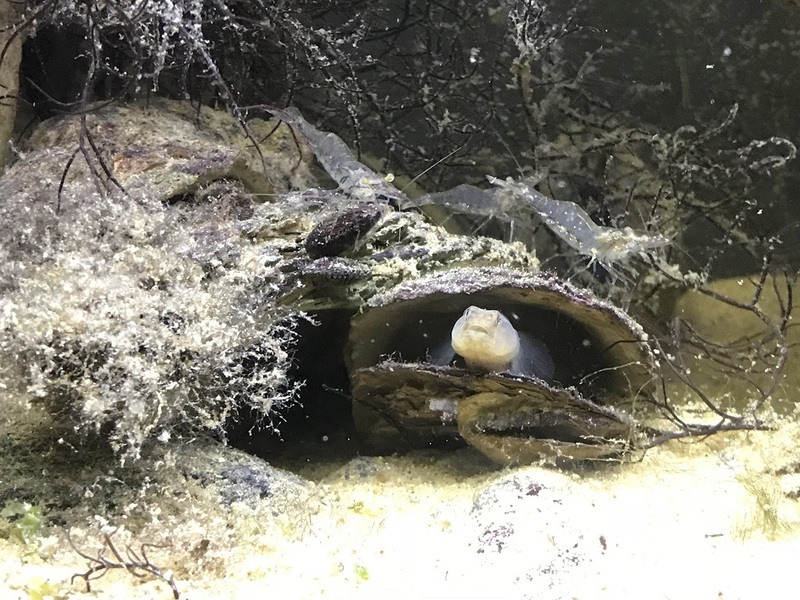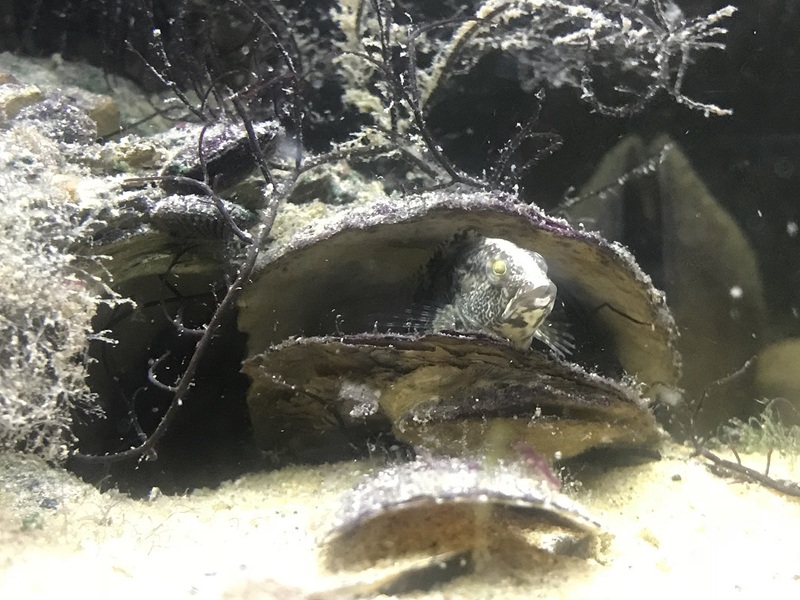I thought that I'd post a couple pics.
Grass shrimp feeding on a cyanobacteria patch. I've seen a few of these shrimp with reddish purple stomachs, so they eat some cyanobacteria and definitely feed on detritus that settles on it. They don't eat enough cyano fast enough to make much of a dent in it though. I haven't applied the treatment that I bought yet, hoping that it dies out naturally. Right now, the cyano isn't taking over the tank, so that is a good thing.

Naked goby in his hangout, with some shrimp standing guard.

This skilletfish doesn't seem to know which way is up half the time...or maybe he thinks the same thing about me?

Grass shrimp feeding on a cyanobacteria patch. I've seen a few of these shrimp with reddish purple stomachs, so they eat some cyanobacteria and definitely feed on detritus that settles on it. They don't eat enough cyano fast enough to make much of a dent in it though. I haven't applied the treatment that I bought yet, hoping that it dies out naturally. Right now, the cyano isn't taking over the tank, so that is a good thing.

Naked goby in his hangout, with some shrimp standing guard.

This skilletfish doesn't seem to know which way is up half the time...or maybe he thinks the same thing about me?


























